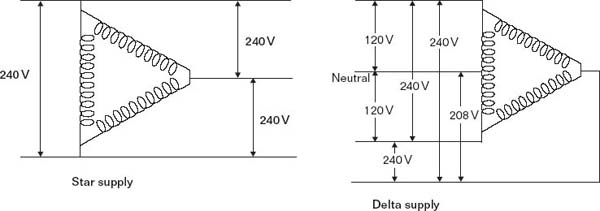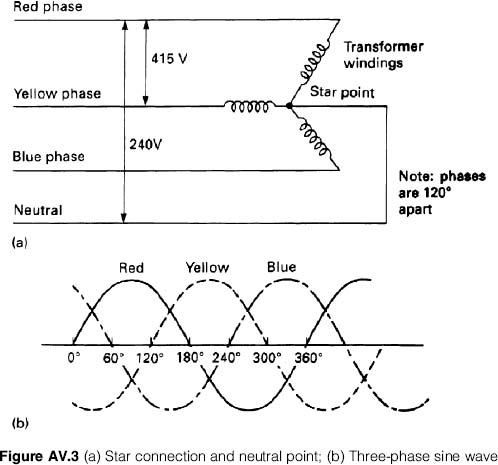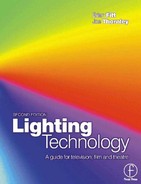Appendix V
Formulae and conversion tables
Most scientific measurements are made using the International System of Units (Systeme International d'Units) or SI for short.
The three basic units are the metre, kilogram and the second. From these are derived the whole range of units which cover the world of physics. For the ease of our readers we have picked out only those units which are applicable to the subject matter in this book.
Measurement of length
Basic unit: |
metre (m) |
Other units: |
|
centimetre (cm) |
= one hundredth of a metre (10−2 m) |
millimetre (mm) |
= one thousandth of a metre (10−3 m) |
nanometre (nm) |
= one thousandth millionth of a metre (10−9 m) |
Measurement of area
Basic unit: |
square metre (m2) |
Other units: |
|
square centimetre |
= one ten thousandth of a square metre (10−4 m2) |
Measurement of mass
Basic unit: |
kilogram (kg) |
Other units: |
|
gram (g) |
= one thousandth of a kilogram (10−3 kg) |
tonne (t) |
= one thousand kilograms (103 kg) |
Measurement of force
Basic unit: |
Newton (N) |
One Newton is the force required to impart an acceleration of 1 m/sec2 to a mass of 1 kg. |
|
Measurement of electric current
Basic unit: |
ampere (A) |
Other units: |
|
milliampere |
= one thousandth of an ampere (10−3 A) |
Measurement of thermodynamic temperature
Basic unit: |
kelvin (K) |
Note: The kelvin scale used the same interval of degrees as the Celsius scale. ‘Absolute zero’ on the kelvin scale is minus 273°C. |
|
Thus: K = (°C) + 273. |
|
Measurement of light
|
Physical units |
Luminous units* |
Total light output |
Radiant flux (watts) |
Luminous flux (lumens) |
Light emitted in a specific (candelas) direction |
Radiant intensity (watts per steradian) |
Luminous intensity |
Light emitted from a unit area in a specific direction |
Radiance (watts/cm2 per steradian) |
Luminance (candelas/cm2) |
Light striking a unit area |
Irradiance (watts/cm2) |
Illuminance (lumens/m2 = lux) |
* Note: Luminous units take into account the eyes’ photopic response.
Electrical formulae
Ohms law states that the current (l) flowing in a circuit is directly proportional to the applied voltage (V) and inversely proportional to the resistance (R), thus:
![]()
Power (P) in the circuit is given by the product of voltage (V) and current (l). The unit of power is the watt (W), thus:
P = V × l watts
alternatively as V = lR therefore P = l2R watts
![]()
The above formulae are those used for direct current (d.c.) circuits.
For alternating current (a.c.) circuits, the formulae only hold true when the circuit is purely resistive. That is, the voltage and current are in phase with each other. If the circuit contains inductance or capacitance the voltage and current will be out of phase to some degree.
To allow for this discrepancy we have to modify the formulae as follows:
In an a.c. circuit the ratio of applied voltage (V) divided by current (l) is called the impedance (Z):
![]()
The power is given by: P = Vl cos ϕ watts where ϕ is the phase difference between the current and supply voltage. Cos ϕ is called the power factor (PF)
The power factor is also given by:
![]()
For most practical measurements:
![]()
Electrical energy
This is the measurement of power used over a period of time.
Thus: Watts × seconds |
= watt-seconds or ‘joules’ (J) |
1 kWh |
= 1000 × 3600 watt-seconds |
|
= 3 600 000 J |
For practical purposes the units most used are:
kilowatts × hours = kilowatt-hours (kWh)
Generally called a unit of electricity

Figure AV.1 Single-phase sine wave

Figure AV.2 Star and delta distribution

Figure AV.3 (a) Star connetinon and neutral point; (b) Three-phase sine wave
Conversion factors
Length
Inches × 25.4 |
= millimetres |
Millimetres x 0.03937 |
= inches |
Inches × 2.54 |
= centimetres |
Centimetres × 0.3937 |
= inches |
Feet × 0.3048 |
= metres |
Metres × 3.281 |
= feet |
Area
Sq. inches × 6.452 |
= sq. cms. |
Sq. cms × 0.155 |
= sq. ins. |
Sq. feet × 0.0929 |
= sq. metres |
Sq. metres × 10.76 |
= sq. feet |
Volume
Cubic ft. × 0.02832 |
= cubic metres |
Cubic metres × 35.311 |
= cubic ft. |
Mass
Pounds × 0.4536 |
= kilograms |
kilograms × 2.205 |
= pounds |
Tons × 1016 |
= kilograms |
kilograms × 0.0009844 |
= tons |
Tons × 0.9844 |
= tonnes |
tonnes × 1.016 |
= tons |
Pressure
1 Bar |
= 100kN/m2 |
|
1 Standard atmosphere |
= 1.01325 bar |
= 101.325 kN/m2 |
1 lbf/in2 |
= 0.06895 bar |
= 6.895 kN/m2 |
1 Standard atmosphere |
= 14.69 lbf/in2 |
|
